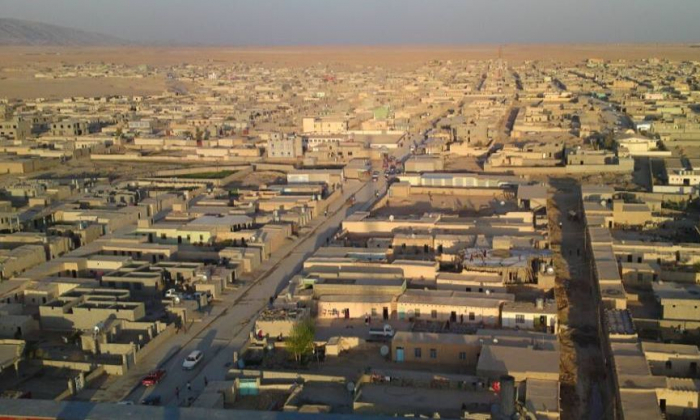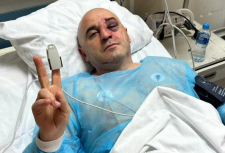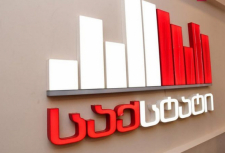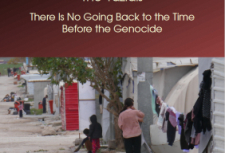Sinjar hub: Security dilemma and strategic challenges facing Iraq

Today, the Sinjar region, in which the majority of the Yazidi minority live, is witnessing complex conflicts, some of which stem from the nature of the internal reality in Iraq, represented by the struggle for influence and control and others are related to the fact that they are part of a regional conflict that resonates in this area and makes the security situation in Sinjar very It is complex and poses a serious problem for the national security of Iraq. Because of the negative failures and problems created by this environment, with its political, economic, social and demographic interactions, which will play an important role in shaping the future of Sinjar in the next stage.
Sinjar today
Sinjar is of great importance in the security equation of Iraq because of its important geopolitical position in the balance of armed forces within the country, where many local and regional forces are fighting for control over it, in addition to its economic advantages as one of the main types of Iraq in relation to Turkey and Syria, as well as its demographic and social value.
Sinjar district is located in the west of Nineveh province, in northern Iraq, on Mount Sinjar, 80 kilometers from the center of Mosul. According to the 2014 census, its population was more than 84,000 people. They are divided into several ethnic, religious and national components, primarily Yazidis, Arabs, Turkmens and Kurds.
The political, social, security sphere and geographical reality of the Sinjar region have witnessed a continuous process of dynamic changes since the US occupation of Iraq in 2003. Constitutional disputes between the Kurdistan Regional Government of Iraq and the Federal Government over disputed territories, which are provided for in article 140 of the Permanent Constitution of Iraq of 2005.
Sinjar district, in turn, represented one of the most notable unresolved disputes between the region and the center, since it is a disputed territory. Thus, the ability of the Kurdistan Regional Government to establish control over the judicial system after 2003 led to the first process of demographic change witnessed by the judicial system, as the politics of the region led to the expulsion of many clans compared to a marked increase in the Kurdish population.
After ISIS was able to control the judicial system in 2014, the system entered a second process of demographic change, purging it of the Yazidi population to enter a third process of demographic change, the Arabization of Yazidi territory.
The judicial system today is in a state of instability due to the comprehensive changes that have taken place in it, in addition to the hard work that led to the post-ISIS era, as clan revenge and political conflict still continue in the judicial system. The judicial system had counterproductive results, so that the lines of conflict between the ethnic, religious and national components of Sinjar became multi—track and intertwined in dimensions, which made the judicial system one of the most important problems facing Iraq today.
Dengê Êzdiya
Tags: #yazidisinfo #newsyazidis #aboutyazidis #iraqyazidis #genocideyazidis
Sinjar hub: Security dilemma and strategic challenges facing Iraq

Today, the Sinjar region, in which the majority of the Yazidi minority live, is witnessing complex conflicts, some of which stem from the nature of the internal reality in Iraq, represented by the struggle for influence and control and others are related to the fact that they are part of a regional conflict that resonates in this area and makes the security situation in Sinjar very It is complex and poses a serious problem for the national security of Iraq. Because of the negative failures and problems created by this environment, with its political, economic, social and demographic interactions, which will play an important role in shaping the future of Sinjar in the next stage.
Sinjar today
Sinjar is of great importance in the security equation of Iraq because of its important geopolitical position in the balance of armed forces within the country, where many local and regional forces are fighting for control over it, in addition to its economic advantages as one of the main types of Iraq in relation to Turkey and Syria, as well as its demographic and social value.
Sinjar district is located in the west of Nineveh province, in northern Iraq, on Mount Sinjar, 80 kilometers from the center of Mosul. According to the 2014 census, its population was more than 84,000 people. They are divided into several ethnic, religious and national components, primarily Yazidis, Arabs, Turkmens and Kurds.
The political, social, security sphere and geographical reality of the Sinjar region have witnessed a continuous process of dynamic changes since the US occupation of Iraq in 2003. Constitutional disputes between the Kurdistan Regional Government of Iraq and the Federal Government over disputed territories, which are provided for in article 140 of the Permanent Constitution of Iraq of 2005.
Sinjar district, in turn, represented one of the most notable unresolved disputes between the region and the center, since it is a disputed territory. Thus, the ability of the Kurdistan Regional Government to establish control over the judicial system after 2003 led to the first process of demographic change witnessed by the judicial system, as the politics of the region led to the expulsion of many clans compared to a marked increase in the Kurdish population.
After ISIS was able to control the judicial system in 2014, the system entered a second process of demographic change, purging it of the Yazidi population to enter a third process of demographic change, the Arabization of Yazidi territory.
The judicial system today is in a state of instability due to the comprehensive changes that have taken place in it, in addition to the hard work that led to the post-ISIS era, as clan revenge and political conflict still continue in the judicial system. The judicial system had counterproductive results, so that the lines of conflict between the ethnic, religious and national components of Sinjar became multi—track and intertwined in dimensions, which made the judicial system one of the most important problems facing Iraq today.
Dengê Êzdiya
Tags: #yazidisinfo #newsyazidis #aboutyazidis #iraqyazidis #genocideyazidis


























